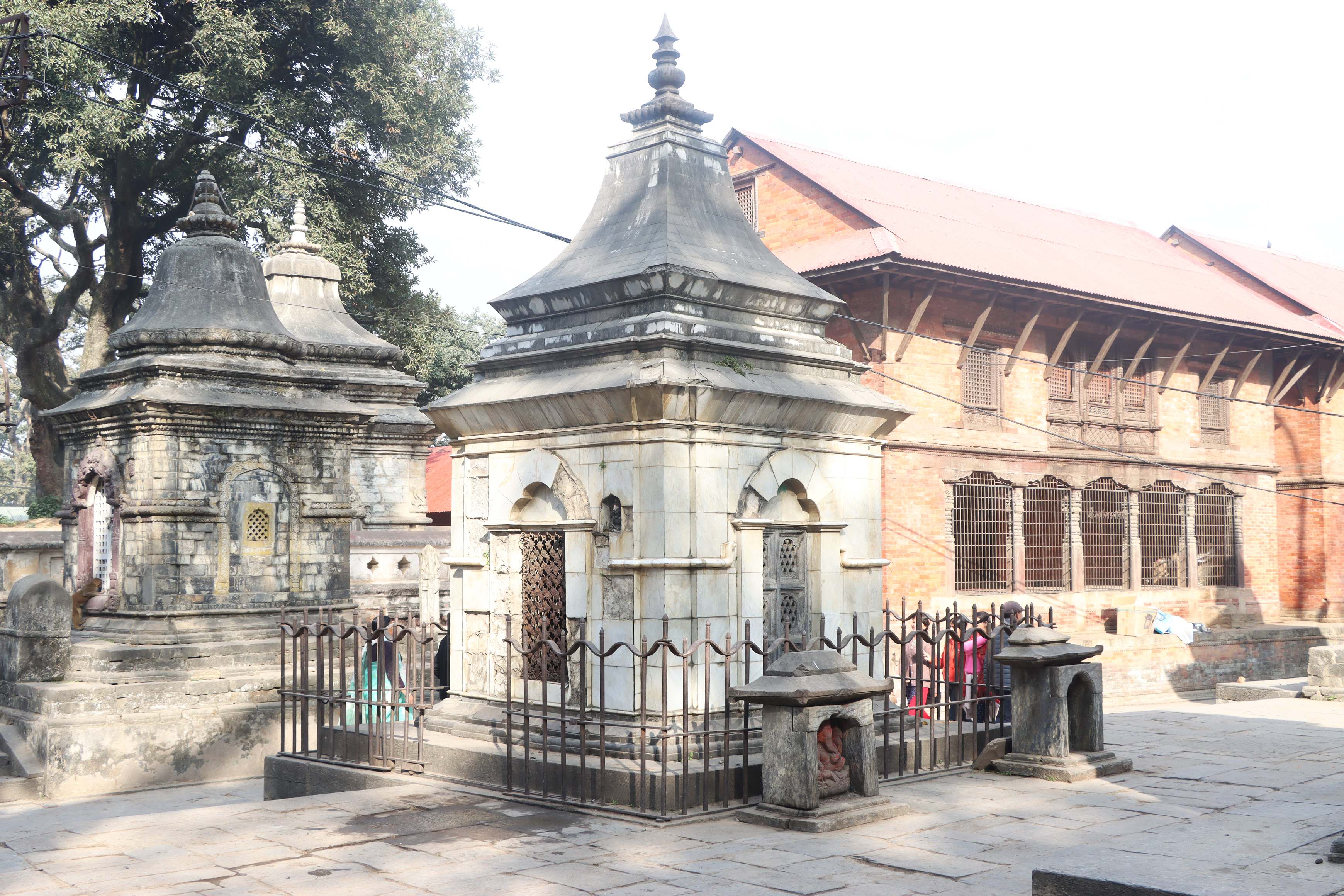Rāmakṛṣṇeśvara Śivālaya at Gorakhanātha Area, Paśupati
Curated by Rajan Khatiwoda

This Śiva temple (DANAM ID: PPK1936) stands as the earliest śivālaya from the Śāha period in the Paśupati region, commissioned by Rāmakṛṣṇa Kũvara, great-grandfather of Jaṅga Bahādura Rāṇā. Adorned with a bell-shaped roof and ceramic tiles, it features a stone śivaliṅga representing Rāmakṛṣṇeśvara Mahādeva. Nandī, Gaṇeśa, and Kālī statues accompany the main deity. Though lacking inscriptions about its construction, an inscription dated ŚS 1678 (1756 CE) on the Kālī statue suggests earlier origins. Rāmakṛṣṇa Kũvara's contributions during the Gorkha victory led to land grants and the construction of temples, including Rāmakṛṣṇeśvara. Conflicting accounts mention construction years like 1774 CE, 1769 CE, and 1874 CE. Rāmakṛṣṇa Kũvara passed away in 1787 CE, contributing to the establishment of a trust in 1781 CE for temple worship and maintenance. Renovated by Prime Minister Raṇa Uddīpa Siṃha, the temple now houses a stone śivaliṅga. Though daily rituals have ceased, descendants visit on Bālā Caturdaśī for special worship. The temple's historical significance underscores the need for active preservation and study. For more information about this monument, visit DANAM entry here.
